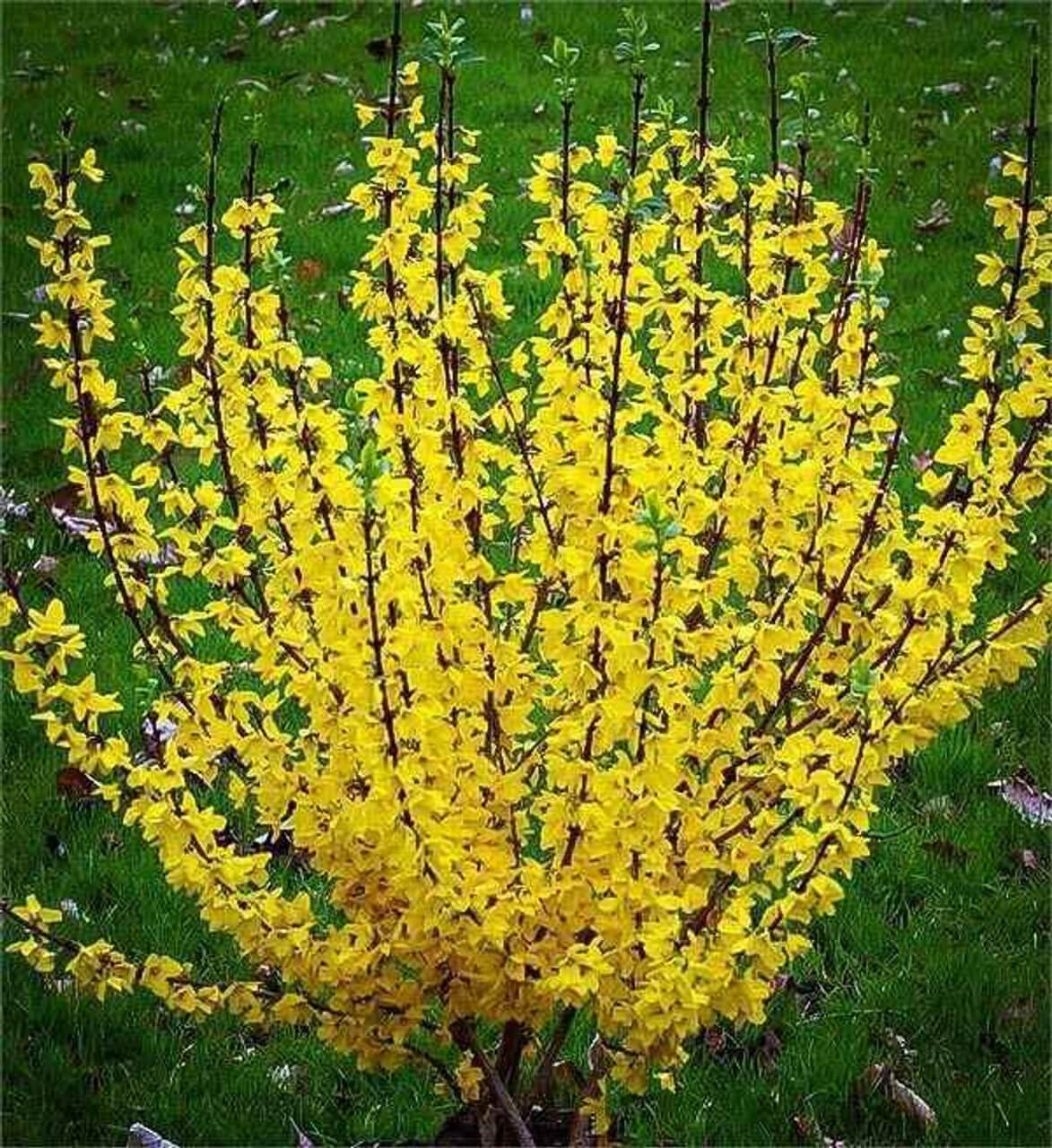A well-designed garden is a sanctuary that provides tranquillity and aesthetic appeal to your outdoor space. With its versatile nature, hedges offer an excellent solution to enhance your garden's charm while serving functional purposes such as privacy, noise reduction, and wind protection.
Boxwood (Buxus Sempervirens)
Boxwood is a classic choice for creating formal hedges due to its dense, evergreen foliage and ability to be pruned into various shapes. Its growth habit makes it ideal for creating precise boundaries and topiaries. Boxwood's rich green leaves bring an elegant touch to any garden, whether a low border or a high hedge.
The Leyland Cypress is an excellent option for those seeking a fast-growing hedge. Its rapid growth rate and feathery foliage make it practical for creating privacy screens. However, regular trimming is essential to maintain its shape and prevent overgrowth. This hedge is perfect for gardeners looking to establish a green barrier quickly.
Privet hedges are known for their adaptability to various soil conditions and ability to thrive in both sun and partial shade. With semi-evergreen or deciduous varieties, privet hedges can be a versatile addition to your garden. Their dense foliage provides excellent privacy and can be pruned to the desired height.
Yew hedges are revered for their longevity and ornamental value. Their dark green needles and red berries add a touch of elegance to any landscape. Yews can be pruned into intricate designs or maintained as natural screens.
Hornbeam hedges offer a unique texture with their serrated leaves that turn a beautiful yellow-orange in the fall. These hedges are often used to create an informal, relaxed boundary. With the ability to tolerate heavy pruning, hornbeam hedges can be maintained at various heights while retaining their visual appeal.
While less conventional than other hedge options, roses can be trained into beautiful flowering hedges. They provide a fragrant and colorful addition to your garden. Varieties like the rugosa rose are particularly suited for hedging due to their dense growth and ability to withstand pruning.
Beech hedges are known for their stunning copper-colored spring leaves and their ability to retain leaves throughout the winter months. This characteristic makes them effective year-round privacy screens. Regular pruning to encourage dense growth can maintain beech hedges.
Arborvitae, or Thuja or cedar, is famous for evergreen hedges. With various cultivars available, you can choose the height and shape that suits your garden. Arborvitae hedges create a consistent green backdrop and are often used to block out unwanted views or noise.
Forsythia hedges, with their vibrant yellow flowers, bring a burst of color to early spring. While they are not evergreen, their dense growth habit can still provide privacy during the warmer months. Forsythias are an excellent option for gardeners, combining flowering beauty with functional hedging.
Japanese holly is a versatile hedge option that can mimic the look of boxwood with smaller leaves. Its compact growth and adaptability to pruning make it suitable for various garden styles. Japanese holly is also well-suited for creating intricate topiaries and formal designs.
Selecting Hedges for Your Home Garden
Whether you prioritize privacy, aesthetic appeal, or a combination of both, there's a hedge species that can fulfill your garden's needs. From the classic charm of boxwood to the vibrant blossoms of forsythia, each hedge option brings unique characteristics to your outdoor space.
By carefully considering factors such as growth rate, maintenance requirements, and overall design goals, you can create a stunning hedge that enhances your garden and offers a sense of seclusion and beauty. In outdoor landscaping and design, hedges have long been prominent, offering a unique blend of natural tranquillity and aesthetic appeal.
These lush, verdant boundaries are not merely functional partitions but also artistic expressions that transform ordinary spaces into captivating havens.
The use of hedges in outdoor design traces back centuries, with origins rooted in various cultures across the globe. The ancient Romans and Greeks employed hedges to delineate property boundaries and create private retreats, often adorning them with sculptures and decorative elements.
In medieval Europe, intricate knot gardens featuring meticulously pruned hedges flourished as symbols of wealth and status, while Japanese Zen gardens incorporated hedges to foster contemplation and harmony. The enduring appeal of borders lies in their ability to seamlessly blend history with modernity, offering a timeless connection to the past while enhancing contemporary outdoor aesthetics.
Hedges, with their diverse range of species and growth habits, offer an unparalleled canvas for creative expression in outdoor design. From the classic elegance of tightly manicured boxwood hedges to the untamed beauty of informal private barriers, there exists a broad spectrum of options to cater to various design preferences.
The height and density of walls can be tailored to create secluded nooks within more significant landscapes, inviting occupants to escape the hustle and bustle of daily life. Additionally, hedges can be shaped into artistic forms, adding a sculptural element that transforms greenery into living art. The play of light and shadow through the leaves and branches of hedges further contributes to the dynamic visual impact they bring to outdoor spaces.
Hedges have an innate ability to evoke a sense of tranquility by connecting outdoor spaces with the natural world. As a living barrier, they gently buffer the surroundings from external disturbances, creating a serene atmosphere that brings relaxation and contemplation. The rustling of leaves in the breeze, the subtle fragrance of blossoms, and the soft diffusion of sunlight through the foliage all contribute to a sensory experience that soothes the mind and uplifts the spirit.
Whether positioned as a backdrop to a contemplative seating area or as a defining feature of a garden pathway, hedges infuse outdoor spaces with an organic calm that is inherently therapeutic.
Hedges Are Ever-Changing Throughout the Seasons
As the year unfolds, hedges transition through a kaleidoscope of colors and textures. The lushness of summer sees borders at their peak, providing optimal privacy and visual delight. As autumn arrives, the leaves transform into a symphony of warm hues, adding a touch of nostalgia and drama. Even in winter dormancy, hedges retain their form, offering an architectural elegance that starkly contrasts the frosty surroundings. This seasonal metamorphosis ensures the outdoor space is a dynamic and ever-evolving sanctuary for the senses.
While hedges' appeal is undeniable, their maintenance is critical to preserving their beauty and functionality. Regular pruning and shaping are essential to maintaining the desired form and preventing overgrowth. Strategic trimming not only ensures a neat appearance but also encourages healthy growth.
Adequate watering and fertilization support the hedge's vitality, while pest control measures safeguard against potential threats. Balancing meticulous care and a more naturalistic approach is essential, as too-manicured walls might lose some of their organic charm.
The Environmental Benefits of Evergreen Shrubs
Beyond their aesthetic contribution, hedges offer several environmental advantages that make them an asset to any outdoor space. As natural windbreaks, they shield gardens and homes from solid winds, reducing energy consumption by mitigating heat loss.
Hedges also play a vital role in preventing soil erosion, as their intricate root systems stabilize the soil. Moreover, these green barriers serve as habitats for various bird species and pollinators, enhancing biodiversity and promoting a healthier ecosystem. By absorbing carbon dioxide and releasing oxygen, hedges contribute to cleaner air and a more sustainable environment.
Hedges transcend mere landscaping elements; they embody tranquility and aesthetic allure. Their historical significance, versatile design possibilities, and ability to create a peaceful sanctuary in outdoor spaces make them indispensable components of landscape architecture.
As each season unfurls its unique beauty and the hedge's leaves whisper tales of time, the outdoor space becomes an ever-changing gallery of nature's artistry. The careful balance of cultivation and appreciation ensures that barriers continue to grace outdoor spaces with their enchanting presence, inviting individuals to immerse themselves in the serene embrace of their verdant elegance.
Designing Picture-Perfect Hedges for Every Garden
An evergreen hedge design that remains green every season delivers advantages for practical uses and visual appeal. An evergreen hedge provides essential support for outdoor spaces through its dual purpose as a privacy screen, windbreak, and decorative feature. This section provides comprehensive guidance on planning for and maintaining an evergreen hedge while omitting specific plant varieties.
1. Determining the Purpose of the Hedge
First, establish the purpose of an evergreen hedge in your landscape.
Screening and Privacy
For those seeking privacy, choose plants that produce dense foliage that swiftly grows to the required height. Place this hedge along property lines or near seating areas to create a year-round barrier against noise and prying eyes.
Garden Borders
Select small plant varieties for a tidy border along pathways, driveways, or flower beds. Low hedges define shapes and spaces while maintaining visual accessibility.
Focal Enhancement
When placed in formal or artistic settings, hedges take on a sculptural role in landscapes. Sharp geometric shapes and smooth curved lines help draw attention to statues, ponds, or seating areas.
Determining what task the hedge should perform allows you to select the appropriate evergreen species and spacing while choosing the best design style.
2. Growth Habits and Leaf Types
The leaf shape, color, and growth habits of evergreen plants vary extensively. Although they are different from each other, evergreens have one common trait: They maintain their leaves throughout the entire year. Consider a plant's growth rate, density, and trimming tolerance when choosing the right type for your yard.
Foliage Density: Certain evergreens have multiple layered branches that provide dense foliage to ensure complete privacy.
Growth Rate: Although quicker-growing shrubs and conifers take up space more rapidly, they must be pruned more often. Less maintenance is required for slow-growing plants, although they need several growing seasons to mature.
3. Spacing and Layout
Correct spacing and layout remain essential to achieve a unified appearance regardless of which evergreen type you select.
Distance Between Plants
Each shrub and tree requires a specific planting distance for proper airflow between plants. When plants are positioned too close, they overcrowd the space and become more prone to diseases, but if they are spaced too far apart, the area will remain uneven for several years.
Single vs. Double Rows
The most impenetrable barrier can be achieved by planting two staggered rows about one to two feet apart. This planting method helps you achieve a thick hedge faster and eliminates empty spaces between plants.
Straight vs. Curved Lines
Straight lines benefit modern and traditional garden layouts, while curved hedges create a natural and relaxing landscape effect. Laying design by laying out the intended shape can visually represent your design stakes or a hose.
4. Formal or Informal Styles
The aesthetic outcome of your hedge depends on whether you choose a formal or informal shaping approach.
Formal Hedges
The combination of straight sides and uniform tops produces a structured look that complements gardens with symmetrical or traditional designs. To maintain razor-sharp edges, multiple pruning sessions throughout the year are required.
Informal Hedges
When plants maintain their original shape, they develop a more relaxed outline. Regular maintenance diminishes because periodic trimming is only needed to eliminate dead branches or prevent excessive growth. People who appreciate an organic feel similar to cottage-style surroundings will find this style compelling.
5. Essential Maintenance
The health of an evergreen hedge depends on a consistent maintenance routine.
Pruning
Prune your plants no more than twice per year. When new growth appears, gardeners usually shape their hedges in spring and early summer. To maintain a tidy appearance through winter, it is beneficial to conduct light trimming during late summer. Utilize clean, sharp shears or powered trimmers to prevent uneven cuts and potential damage.
Watering
Newly planted hedges require continuous watering until their roots become established. Water profoundly less often instead of giving your plants shallow watering. After establishment, many evergreens require moderate supplemental water but demand extra care during drought.
Fertilizing
Applying a balanced slow-release fertilizer during early spring usually meets plant nutritional needs. Over-fertilizing can weaken hedges because excessive nitrogen leads to lush growth, which pests quickly attack and lower resilience to winter conditions.
Mulching and Weed Control
A mulch layer that measures two to three inches around plant bases maintains moisture levels and controls weed growth. Position mulch slightly from plant stems and trunks to avoid rot and fungal infections.
6. Adding Design Flourishes
A utilitarian hedge can still feature imaginative design elements.
Layered Plantings
Place shorter ornamental flowers or groundcovers near the base of the hedge to create visual interest. This will allow the hedge to maintain its effectiveness while gaining visual appeal through added color and interest.
Integrated Lighting
Solar-powered spotlights or low-voltage landscape lights can emphasize the hedge's texture when it gets dark. Uplighting emphasizes vertical elements, while downlighting creates an effect resembling moonlight filtering through leaves.
Windowed Effects
Specific gardens feature hedge sections trimmed at lower heights and shaped into "windows" that frame particular views beyond. This design choice allows gardeners to create private spaces offering views of the surrounding landscape.
7. Long-Term Considerations
The growth of evergreen plants requires continuous evaluation to confirm their performance against planned objectives. Branch thinning becomes necessary when excessive interior growth reduces air circulation. Plants extending beyond their designated space might require extensive pruning or need to be replaced regularly. Ongoing observation with timely maintenance keeps hedges healthy regardless of their formal structure or natural growth patterns.
An evergreen hedge provides a lasting framework for your yard while improving privacy and green foliage. Every choice regarding growth habits and positional adjustments creates a year-round boundary through thoughtful design. With meticulous preparation and regular upkeep alongside creative design, you will make an enduring outdoor feature that hides undesirable views while enhancing your garden's overall aesthetic appeal.
The Art of Unique Evergreen Hedge Patterns
An ordinary garden becomes a stunning living tapestry with the addition of evergreen hedges, which provide structure and visual interest throughout the year and deliver essential privacy. Innovative patterns of hedge arrangements can create captivating outdoor spaces that enhance the entire landscape design. Unique hedge layouts develop opportunities to add creative flair to spacious yards and compact urban courtyards while letting your style shine through. The following strategies will guide you in designing visually striking patterns for permanent green hedges.
You can obtain a unique appearance through the application of geometric designs. Break away from traditional straight rows using angled triangles and zigzag patterns flowing across your space. Angular patterns draw the eye along their lines and work well in gardens of both modern and traditional styles. An alternative method includes forming curved shapes like arcs and meandering waves to enhance the landscape. The landscape feels more inviting because these soft curves introduce movement and direct visitors along their garden journey. To achieve a dramatic effect, one can join straight segments with curved ones to form a playful meeting point between the contrasting lines.
Arranging hedges in terraced or stepped patterns produces stimulating visual effects. Set each new row of plants at a higher elevation or arrange them in offset positions. The arrangement produces depth and dimension, transforming a simple garden into an expansive space. The layering technique is highly effective when it creates a frame around essential focal points. A progressively taller hedges guide viewers toward a central sculpture, fountain, or seating area. Your hedge layout becomes more visually engaging when it features alternating heights and textures.
A further idea explores decorative designs that extend past fundamental lines and curves. Gardeners use labyrinth mazes as interactive features that encourage visitors to explore their surroundings. Using maze-like hedge patterns helps develop a fun space that attracts attention from both kids and grown-ups. You could explore circular hedge designs that create bull' s-eye rings centered around a focal point. The overlapping circles create harmony while serving as an effective display area for a valuable decoration or outdoor seating space.
Creating a distinctive visual statement requires blending multiple textures into your hedge pattern. The evergreen hedges maintain their greenery, but certain types exhibit slight variations in leaf design or how they grow. Different foliage characteristics within planted rows or sections create a subtle contrast that becomes more noticeable as the plants grow. The technique achieves the best results when applied to checkerboard patterns or swirling mosaic designs since each section displays distinct textures that create a harmonious composition.
Shaping hedges into swirling topiaries or repeated sculpted forms represents a more artistic landscaping approach. Avoid simple flat hedge sides by choosing to prune certain areas to make undulating surfaces alongside accentuated peaks and valleys. The shaped sections evolve into living artworks that delight the viewer through their natural and sophisticated design elements. You can create visual harmony by arranging sculpted hedge forms in straight lines or alternating them for rhythmic patterns.
Your success will materialize through detailed planning and regular maintenance practices. Use paper sketches or landscape design software to visualize your intended planting plan before establishing the shapes and dimensions. When designing your garden layout, it's essential to assess sunlight exposure alongside soil conditions to confirm that the layout supports ongoing plant growth. Regular pruning, gentle trimming, and proper watering maintain the hedge's health. Dedication and creative input can transform your evergreen hedge pattern into a central garden feature that showcases lasting artistic design.
Read more

Oxygenator plants are those plants that grow in water and remain either partially or fully submerged.They are referred to as oxygenators because they generate oxygen throughout the day by the proce...

Some people have the misconception that water gardens will attract and produce mosquitoes. That is not the case. You can do certain things to eliminate mosquitoes from water gardens. When desig...



